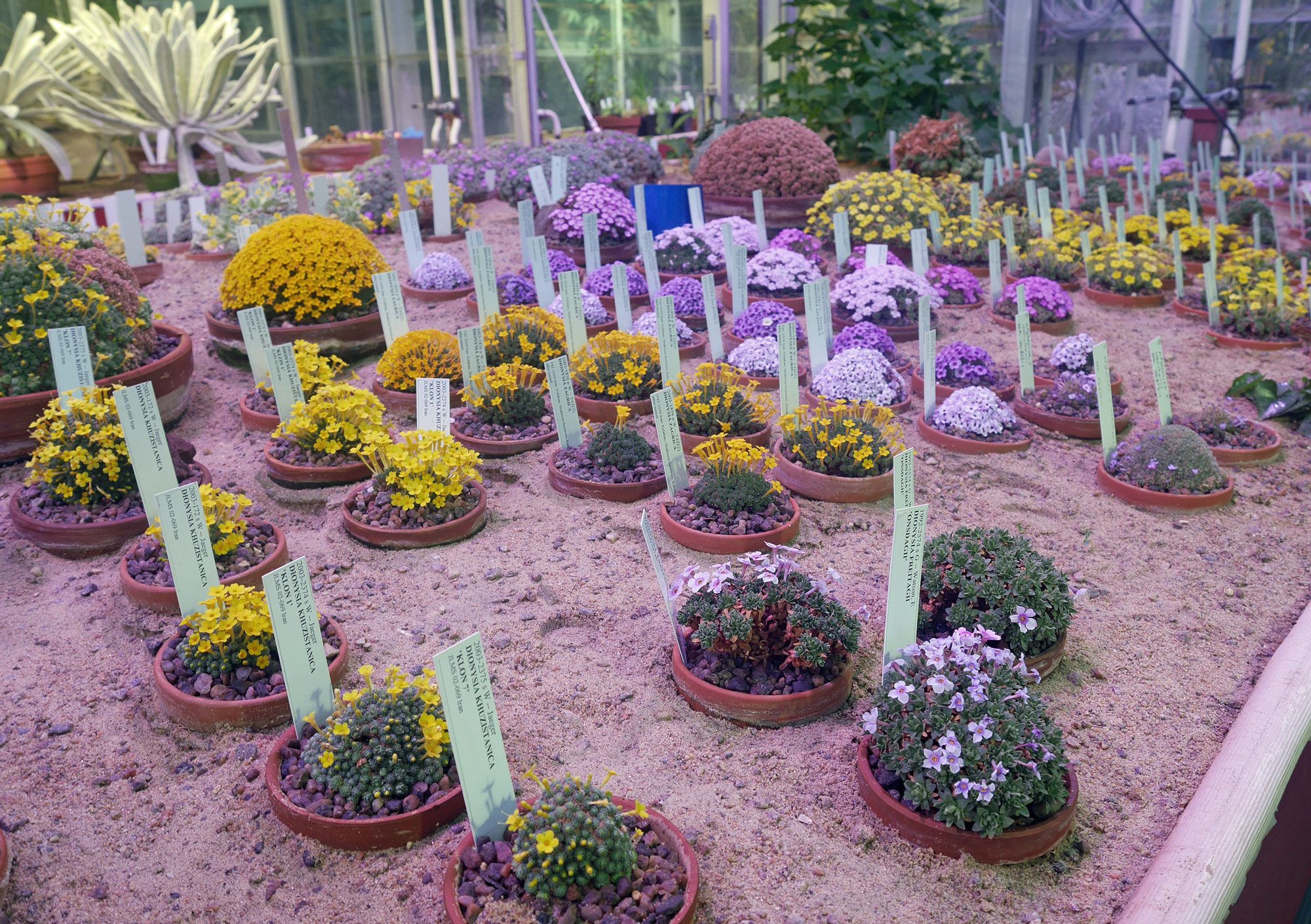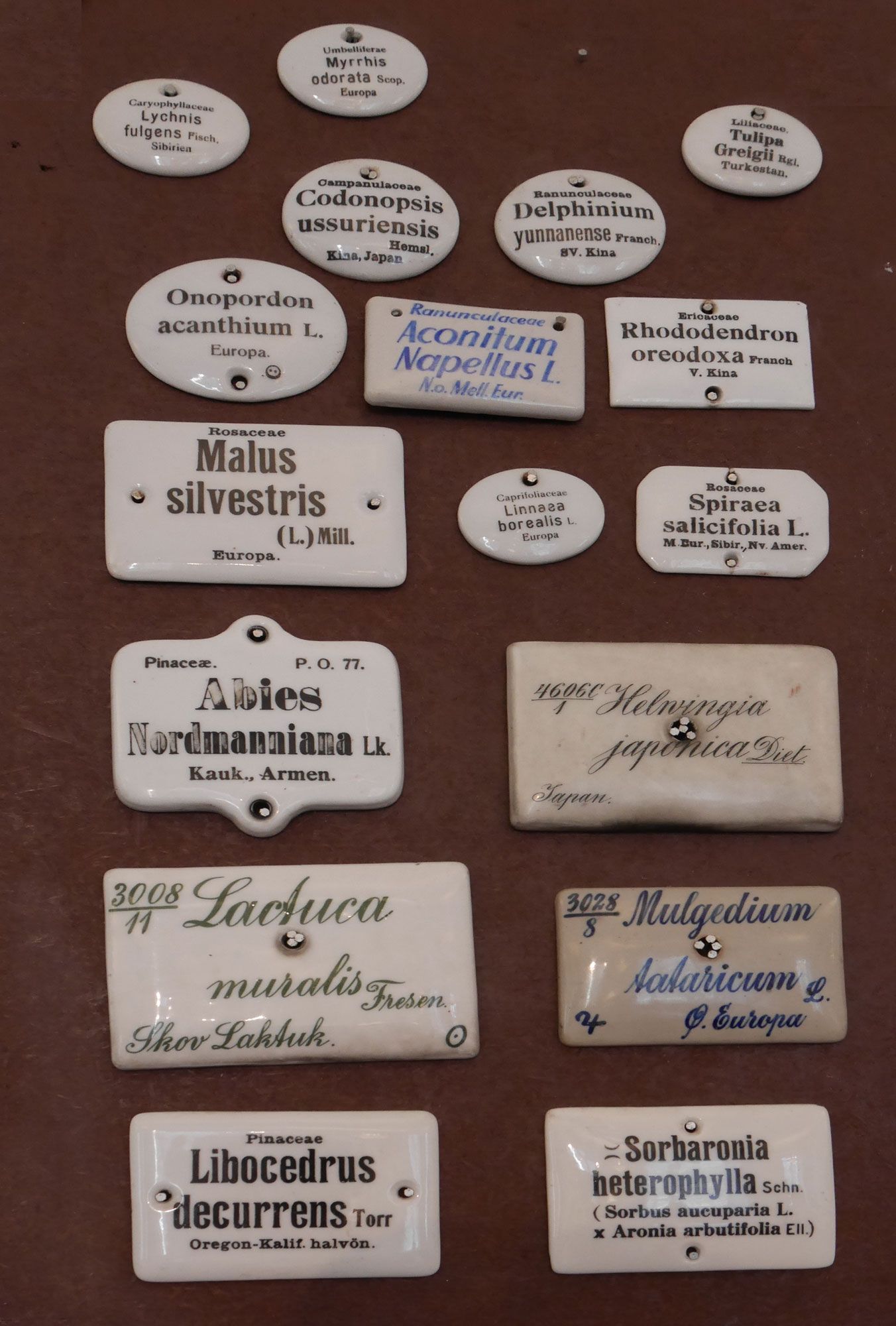How Botanic Gardens Are Preserving Biodiversity


Plant biodiversity sustains our lives, from the food we eat to the clothes we wear, the medicines we take, and the air we breathe. Yet, biodiversity is being lost at a rapid pace with two in five plant species at risk of extinction worldwide (Antonelli, A., et al). What role can botanic gardens play in safeguarding the future loss of biodiversity?
The early botanic gardens were established in Europe during the late 16th century, and their main focus was to teach the various uses of medicinal plants.
“The Botanical Garden of Padua is the original of all botanical gardens throughout the world, and represents the birth of science, of scientific exchanges, and understanding of the relationship between nature and culture. It has made a profound contribution to the development of many modern scientific disciplines, notably botany, medicine, chemistry, ecology, and pharmacy.” UNESCO World Heritage Committee motivation inscription at the world's first botanical garden, Botanical Garden (Orto Botanico), Padua, Italy, founded in 1545. [UNESCO]
19th Century Plant Records at Cambridge University Botanic Garden, UK.
Since then, the scope of botanic gardens and similar collection-based institutions has evolved considerably.
What Defines a Botanic Garden?
A botanical garden is not merely a collection of plants but a meticulously curated space dedicated to studying, displaying, and conserving plant species. These gardens serve multiple purposes:
- Research: They act as living laboratories, where scientists and researchers study plant species, their habitats, and their ecological roles.
- Conservation: Botanical gardens safeguard threatened species, build up cultivation skills on how to grow plants lost in the wild, and take part in the restoration and rehabilitation of degraded habitats.
- Education: Through training future scientists and holding guided tours, workshops, and interactive displays, botanical gardens offer invaluable lessons on plant diversity, ecology, and conservation to students and visitors of all ages. On a broader level, by displaying fascinating species from around the world, botanic gardens kindle an interest in plants and foster a love of nature and the environment.
- Horticulture: Many botanical gardens showcase horticultural displays and esthetic landscape arrangements, creating unique spaces for visitors to enjoy and inspire professional and amateur gardeners alike.

The key to what defines a botanic garden is its role as an institution holding documented collections of living plants. The very essence of the garden revolves around its plant collection, with record-keeping serving as the cornerstone of its existence.
The unknown impact of unreliable data
According to Botanic Garden Conservation International (BGCI), there are more than 3,000 botanical gardens and botanical collection-based institutions in the world, and it is estimated that collectively, these gardens contain at least 30% of all known plant species (BGCI plant search). However, this data is an estimate as we only have information about the content of one-third of the world’s botanical collections, with two-thirds remaining unknown. This huge knowledge gap is due to the poor adoption of computerized plant record systems. Over 80% of botanic gardens rely on basic solutions such as spreadsheets and other workarounds. This makes it difficult for gardens to curate their collections effectively and makes it very hard to participate in any coordinated plant conservation effort.
With the introduction of Hortis, Species360 is dedicated to addressing this problem. Thoughtfully designed, with an emphasis on ease of use, productivity, and low cost of ownership, Hortis is the plant collection platform for the future that aims to make record-keeping accessible to everyone.
Leveraging collection and plant records forms a crucial foundation for research and conservation efforts aiming to safeguard global plant biodiversity. By facilitating data capture, harnessing the power of data-driven insight, and fostering collaborative data management practices, we aim to strengthen botanical institutions' collective knowledge and conservation work worldwide.
The fundamental premise of reliable plant records is that they are up-to-date, information of provenance is recorded, correct scientific names are used, and the location details of the plants are accurate.
Why do plant names matter?
Plants are systematically classified and named according to the well-established scientific nomenclature, a concept formally introduced by the Swedish biologist Carl Linnaeus in 1753, which involves assigning a genus name along with a specific epithet. An example of this is Quercus rubra, commonly known as the red oak. This method of classification aims to organize the vast diversity of life on our planet, providing a framework to make it easier to share knowledge about the natural world.
However, this system continually undergoes changes. Around 2,500 plant species are discovered every year, coupled with evolving scientific insights into the relationships between the species, resulting in an ever-shifting list of names. Scientific evidence prompts revisions in taxonomy, which leads to the introduction of new names that may replace old ones. Consequently, a single accepted name can be associated with multiple synonyms, reflecting the ongoing refinement of our understanding of the intricate web of life.

The Convention on Biological Diversity recognizes that taxonomy is fundamental to conserving biodiversity, because you need to know what plants exist before making assessments on how threatened they are.
A botanic garden can hold very valuable and rare plants, but with incorrect names in use, the plant collection may never be able to participate actively in any helpful way. A sad outcome for all the effort that has gone into bringing the plant material to a collection and its subsequent care.
Are Botanic Gardens our Best Hope?
A solitary plant cultivated in one botanic garden will lack the genetic diversity required for practical conservation purposes. Additionally, there are instances where collections of a specific species across various gardens predominantly consist of clonal copies or possess such a limited genetic foundation that they prove to be inadequate for viable breeding programs.
Collaboration between various collection holders can help increase genetic diversity by bringing together plants of the same species from different collections, creating a valuable source of material for assisted reproduction initiatives aimed at preserving threatened species. (Wood et al., 2020).
"The global network of botanic gardens is our best hope for saving some of the world's most endangered plants. Currently, an estimated one-fifth of plant diversity is under threat, yet there is no technical reason why any plant species should become extinct. Botanic gardens protect an astonishing amount of plant diversity in cultivation, but we need to respond directly to the extinction crisis. If we do not conserve our plant diversity, humanity will struggle to solve the global challenges of food and fuel security, environmental degradation, and climate change.". Dr Samuel Brockington is the curator of Cambridge University Botanic Garden and researcher at Cambridge's Department of Plant Sciences.
The global community of Botanic Gardens is a very powerful ally to humanity in the fight against biodiversity loss. However, at Species360, we are dedicated to delivering the necessary tools and securing sufficient resources to ensure the success of this critical mission.



Planted in 1998 at Royal Botanic Garden Sydney, Australia
References and further reading
Antonelli, A., et al. (2023). State of the World’s Plants and Fungi 2023. Royal Botanic Gardens, Kew. https://doi.org/10.34885/wnwn-6s63
Pearce et al. (2020). International collaboration between collections-based institutes for halting biodiversity loss and unlocking the useful properties of plants and fungi. https://doi.org/10.1002/ppp3.10149
Wood, J., Ballou, D., Callicrate, T., Fant, J. B., Griffith, P., Kramer, A. T., … Havens, K. (2020). Applying the zoo model to conservation of threatened exceptional plant species. Conservation Biology. https://doi.org/10.1111/cobi.13503
Cambridge University Botanic Garden (2017). World's botanic gardens contain a third of all known plant species, and help protect the most threatened. https://www.cam.ac.uk/research/news/worlds-botanic-gardens-contain-a-third-of-all-known-plant-species-and-help-protect-the-most